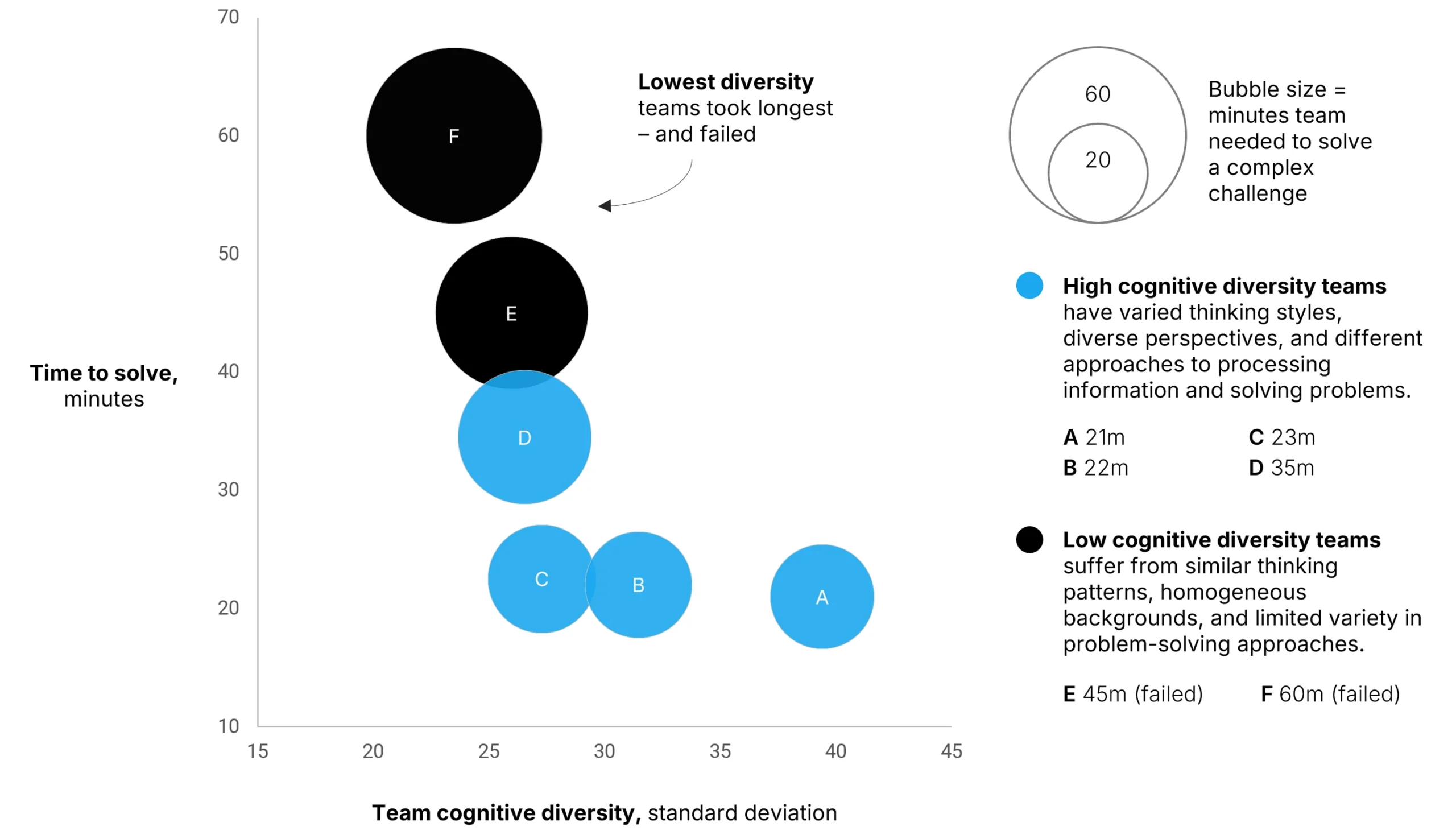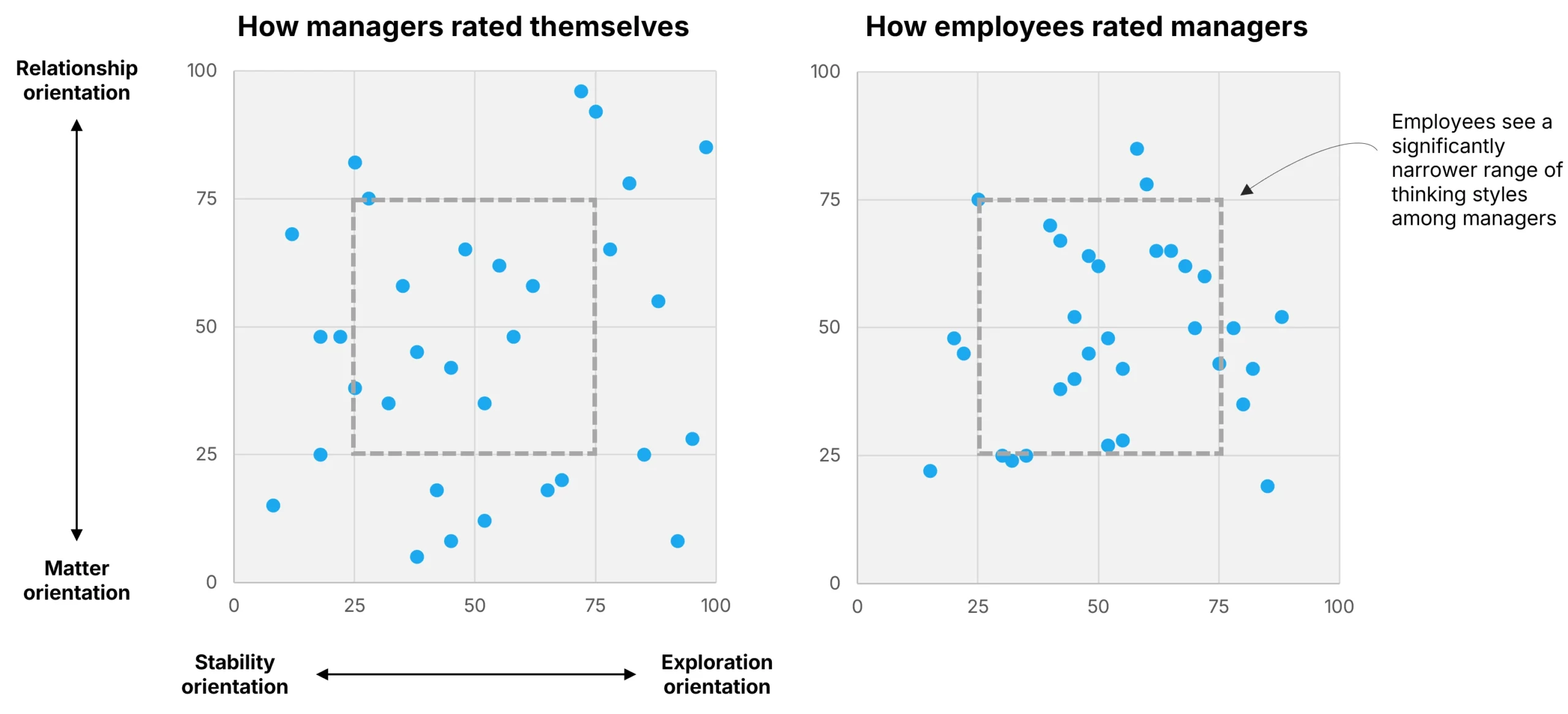Cognitive diversity: your untapped asset in a VUCA world
In today’s landscape of constant Volatility, Uncertainty, Complexity, and Ambiguity (VUCA), leaders across every sector – from pharmaceuticals to public service – are searching for a sustainable competitive advantage. We invest in new technologies, streamline processes, and chase the latest management fads. But what if one of the most powerful catalysts for success is already within our teams, waiting to be unlocked? I’m talking about cognitive diversity: the often-overlooked diversity of how people think, process information, and approach problems.
It’s not about demographics, but about mental models. It’s the difference in perspective, heuristics, and analytical approaches that individuals bring to the table. In a stable, predictable world, teams of like-minded experts can be incredibly efficient. In a VUCA world, however, this homogeneity becomes a liability. When faced with a novel, complex challenge, a team with a narrow range of thinking styles will inevitably get stuck, defaulting to the same solutions that are no longer sufficient.
The hard data on high-performance teams
This isn't just a theory; it's a measurable performance driver. Research by Alison Reynolds and David Lewis, published in the Harvard Business Review, provides compelling evidence. They tasked teams with solving a complex strategic challenge under time pressure and measured two things: the cognitive diversity of the team and the time it took them to succeed.
The results, visualized in the first exhibit, are staggering.

Source: Alison Reynolds and David Lewis. "Teams solve problems faster when they're more cognitively diverse." Harvard Business Review, 2017.
The teams with the highest cognitive diversity (Groups A, B, C, and D) all solved the problem, and they did so in an average of just 25 minutes. In stark contrast, the two teams with the lowest cognitive diversity (Groups E and F) not only took twice as long, but they ultimately failed to solve the problem at all.
For leaders in high-stakes industries like pharmaceuticals, where the speed of innovation can directly impact patient lives and market leadership, this data is a crucial wake-up call. Solving a complex problem like optimizing a clinical trial or navigating a shifting regulatory landscape twice as fast a competitor is a significant win. Failing to solve it is a disaster. The data shows that cognitive diversity isn't a "nice-to-have"; it is a direct predictor of a team's ability to execute on complex tasks.
The leadership blind spot: are you fostering true diversity of thought?
The challenge, however, is that leaders often believe they are already encouraging a wide range of thinking styles when, in fact, they are not. The second exhibit from Reynolds and Lewis’s research reveals a critical perception gap.
When managers rated their own thinking styles, they saw themselves as covering a broad spectrum of approaches, from relationship-oriented to matter-oriented, and from stability-focused to exploration-focused. Their employees, however, told a different story. They perceived their managers as occupying a much narrower, more homogenous range of thinking styles.
This is a profound blind spot. As leaders, we may think we are fostering an environment where diverse perspectives can flourish, but our teams experience something quite different. We tend to hire and promote people who think like us, and we inadvertently signal which modes of thinking are "correct," causing team members to adapt their styles to mirror our own. The result is a hidden intellectual conformity that stifles innovation and cripples a team's ability to tackle VUCA challenges. We think we have a team of unique thinkers, but we are leading a chorus that only knows how to sing one note.

Source: Alison Reynolds and David Lewis. "Teams solve problems faster when they're more cognitively diverse." Harvard Business Review, 2017.
Moving forward: from awareness to action
Harnessing the power of cognitive diversity requires intentional leadership. It starts with recognizing our own biases and blind spots. Are you creating true psychological safety where someone with a wildly different idea can speak up without fear of being shut down?
Here are a few steps to begin:
Hire for cognitive fit, not cultural fit: Instead of asking if a candidate will "fit in," ask what new perspective or problem-solving approach they will add to the team.
Prime for contribution: When kicking off a project, explicitly state that you are seeking different, even conflicting, points of view. Frame the goal as getting to the best possible answer, which requires challenging assumptions.
Manage the abrasion: True cognitive diversity will create friction. The role of a leader is to facilitate constructive debate, ensuring that disagreements are focused on the problem, not the people. For critical decisions, consider hiring a professional facilitator to manage this friction so that you can focus on the content, not the process.
In a world that refuses to stand still, our ability to adapt, innovate, and solve novel problems is paramount. The evidence is clear: building teams with high cognitive diversity is not an HR initiative; it's a strategic imperative. It’s time to look beyond the surface and start cultivating the diversity that truly drives breakthrough results.
About the author
Mark McCarvill is the Founder and Lead Facilitator at Mind Meeting Group, a strategy consulting firm based outside Vancouver, Canada. Mind Meeting Group helps business, government, and non-profit leaders align departments and mobilize teams through collaborative workshops that deliver execution-ready strategies.
